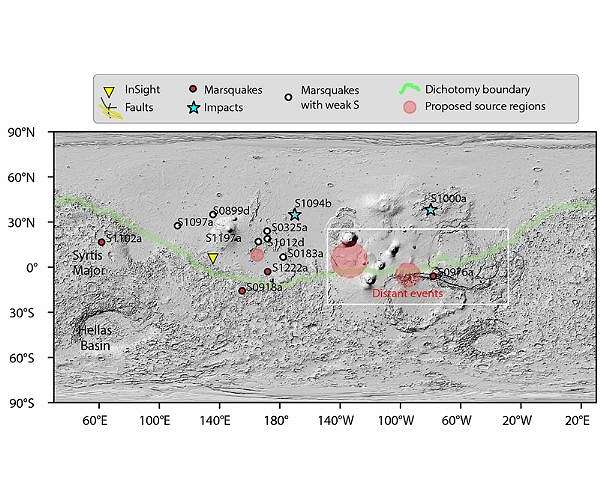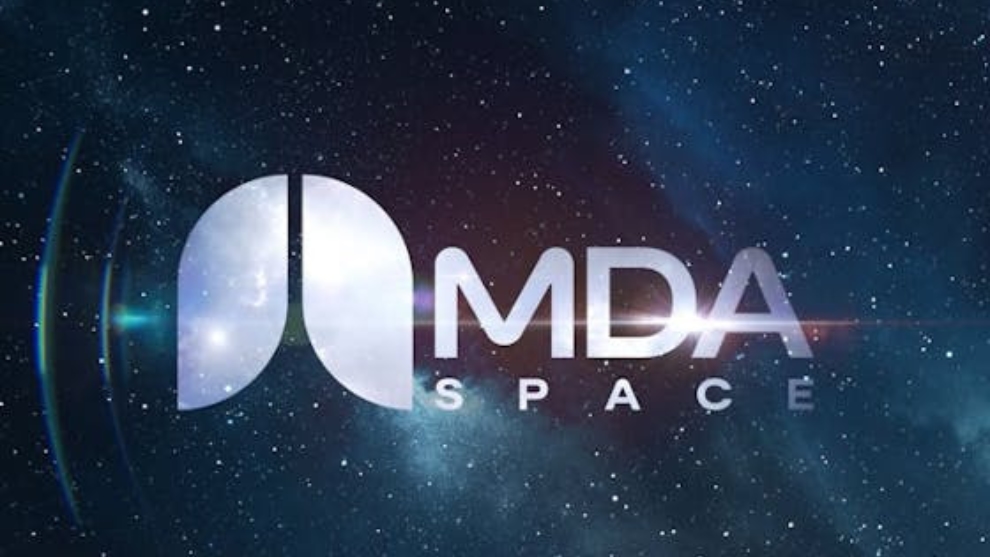Cerberus Fossae Identified as Primary Source of Marsquakes
by Simon Mansfield
Sydney, Australia (SPX) Nov 09, 2023
The Mars InSight mission, since its inception, has shed light on the seismic vibrancy of the Red Planet. The mission’s deployment of a seismic station has led to the recording of 98 low-frequency seismic events. Despite the challenges posed by the singular nature of the data collection point and the often ambiguous seismic signals, a significant stride in martian seismology has been made, pinpointing the source of these marsquakes with greater precision.
The Marsquake Service (MQS) has compiled a catalog of these seismic events, many of which cluster in a north-south band encompassing Cerberus Fossae-a region of Mars that exhibits signs of recent faulting and possible volcanic activity, as suggested by orbital data. The seismic study conducted by Ceylan et al. [2023] has reinvigorated our understanding of these seismic occurrences by leveraging the most prominent events to better assign origins to their weaker counterparts. This methodology successfully mitigated the challenge of discerning indistinct seismic phases, providing a more detailed map of Martian seismicity.
The reassessment by Ceylan et al. has confirmed the prevalence of Cerberus Fossae as a hotbed for marsquakes. However, the study has not stopped there. It has unveiled multiple new clusters of seismic activity, particularly along the dichotomy boundary that separates the higher southern hemisphere from the lower northern plains of Mars. This discovery expands the known seismic landscape, revealing that tectonic activity on Mars engages a broader array of geological features than previously documented.
Notably, the study has situated five seismic events in the vicinity of Western Valles Marineris and near the southern fringe of Olympus Mons-areas not originally associated with such activity. These findings suggest that the geological processes giving rise to marsquakes could be complex and widespread. Furthermore, the largest event on record, S1222a, has been relocated closer to the dichotomy boundary than initially assumed. This revelation emphasizes the potential for seismic activity to occur in areas with significant geological demarcations.
The InSight lander’s solitary seismic station, while limited in its ability to triangulate seismic events due to the lack of multiple reference points, has nonetheless provided an unprecedented glimpse into Martian seismicity. The traditional difficulty in tracing the origins of such seismic activity stems from the one-station setup, which typically requires clear seismic phases to identify the source of the quakes. The innovative approach by Ceylan et al. circumvented this hurdle, using the clearest events as a benchmark to trace the origins of less distinct seismic activities.
The re-evaluation process led by Ceylan et al. is particularly noteworthy for its potential implications for the understanding of Mars’ geology. By refining the source locations of marsquakes, the study enhances our understanding of the planet’s tectonic features and their activity. It also provides valuable data that could inform future missions and the selection of landing sites, as seismic activity could impact the safety and stability of landers and rovers.
The MQS’s catalog of marsquakes, bolstered by this study, now offers a more comprehensive look at the tectonic dynamism of Mars. This enhanced perspective is crucial for researchers aiming to construct a complete picture of the Red Planet’s geological past and present. It also aids in comparative planetology, the study of planetary processes across different celestial bodies, by offering concrete data on Mars’ tectonic movements.
The broadening of our seismic horizon on Mars, as revealed by the InSight mission and studies such as that of Ceylan et al., marks a significant advance in Martian science. While the original expectations of the mission were indeed high, the actual findings have provided a nuanced understanding of Mars’ seismic nature, one that encompasses a wider range of tectonic features and activities.
In conclusion, the InSight mission’s seismic station, despite the intrinsic limitations posed by its lone location, has proven to be a cornerstone in the ongoing exploration of Mars. The findings of Ceylan et al. not only augment our current understanding of Martian seismicity but also open avenues for future research. By identifying new seismic clusters and refining the locations of known events, the study underscores the dynamic nature of Mars’ geology, a crucial component in unraveling the mysteries of our planetary neighbor.
Research Report:Mapping the seismicity of Mars with InSight
Related Links
InSight ETH Zurich
Mars News and Information at MarsDaily.com
Lunar Dreams and more




